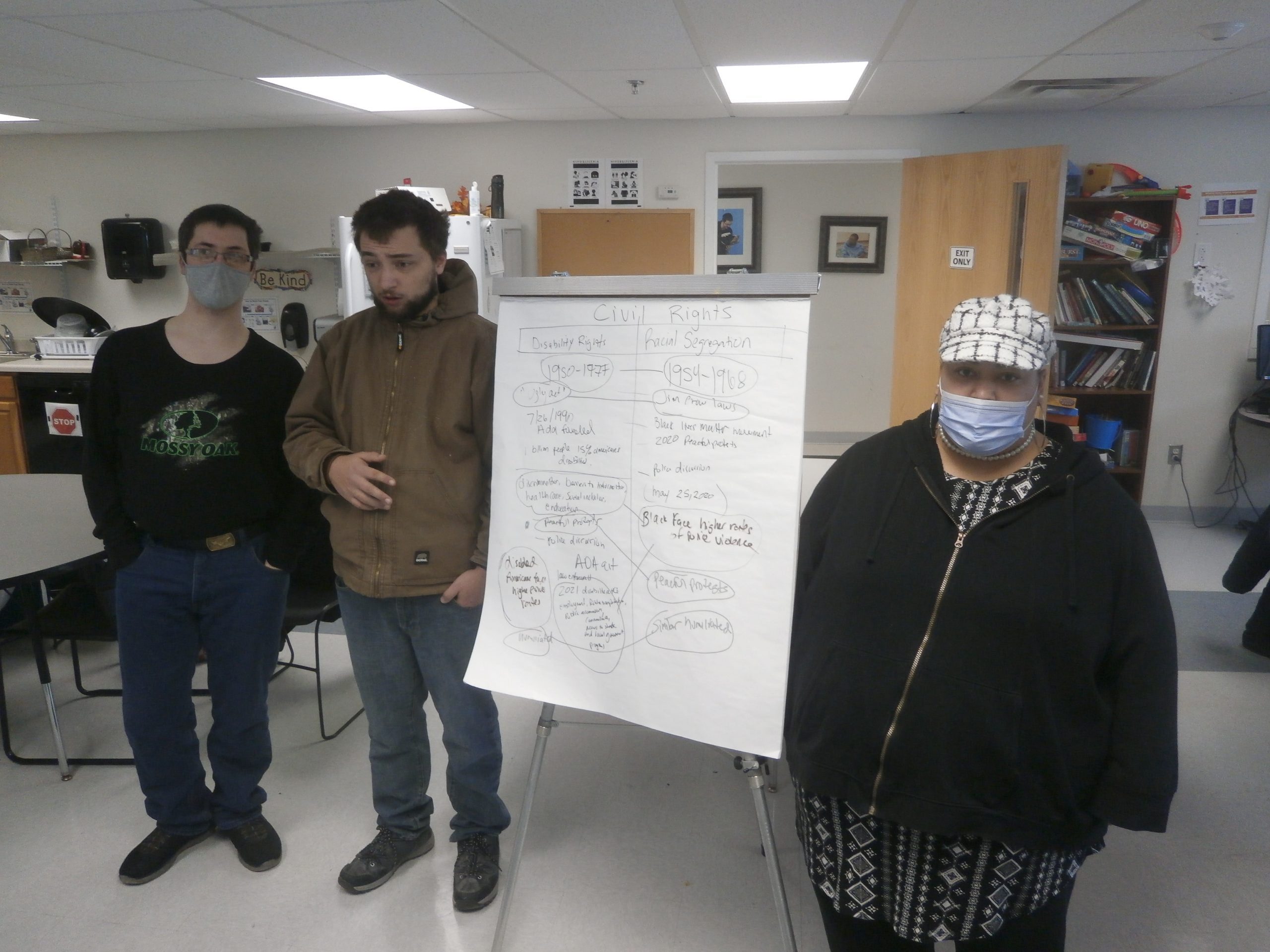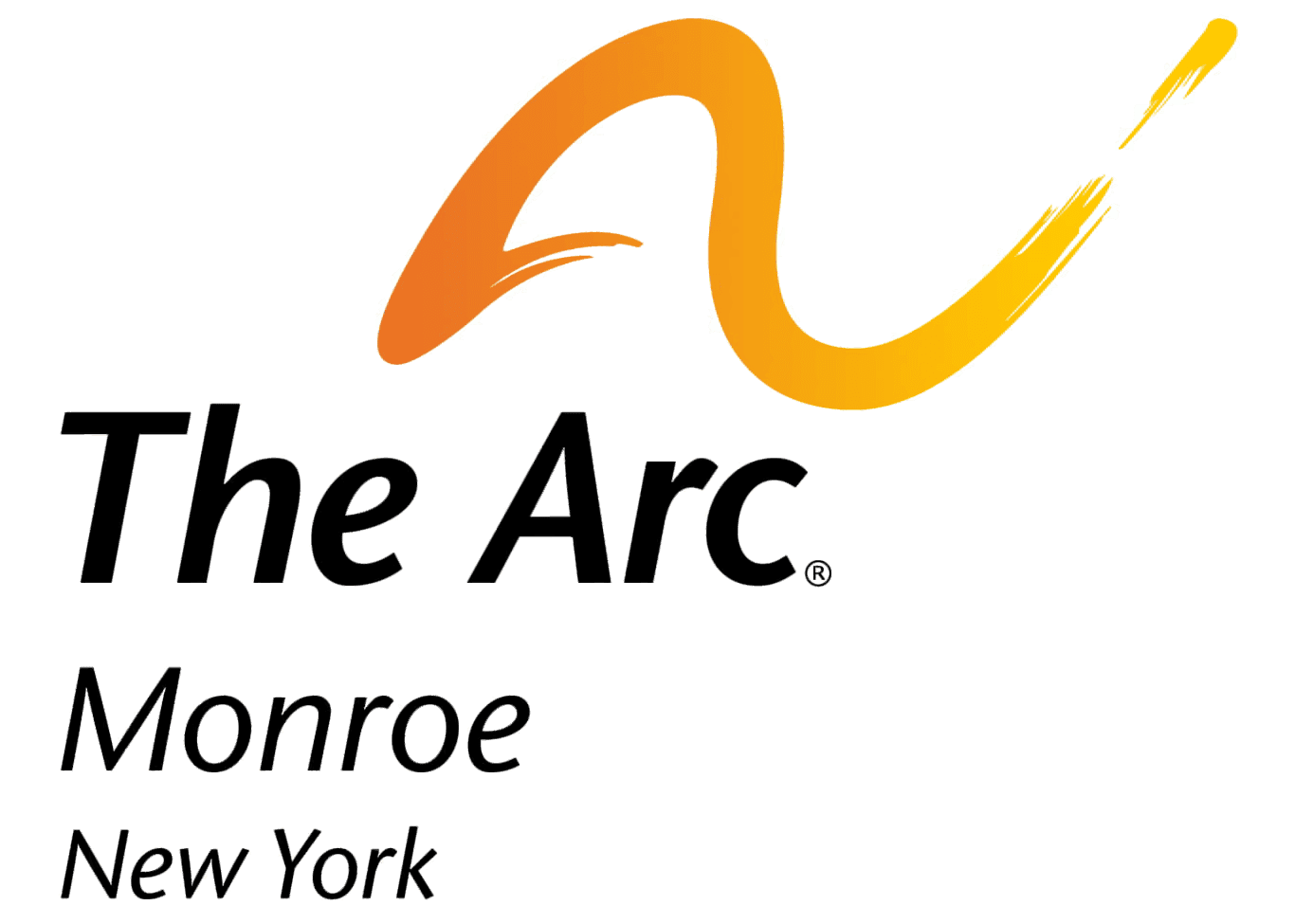For decades, civil rights advocates have led the way in creating meaningful change in American society for many diverse groups of people. As the Civil Rights Movement picked up momentum across the United States in the mid-1900’s, the Disability Rights Movement mirrored many of the same efforts, creating an overlap in advocacy for both populations.

Taken by: Nicholas Wagar
Generations of Black people and people with disabilities were treated in horrific ways throughout our nation’s history. In order to help create a more welcoming, kind community, self-advocates and supporting staff of Arc Alliance – a self-advocacy group organized by The Arc of Monroe – often learn about the history of the intersection of disability and the Black experience. This Black History Month, a group of them wanted to share what they learned with the community in an effort to educate people and create a more welcoming place for people of all abilities, races, ethnicities and cultures.
“We have to take care of every society and share stories from every community,” Jackie Morales (J-Mo), Self-Advocate with Arc Alliance, said. “They have to know about our civil rights so history doesn’t repeat itself.”
An incredibly detailed and helpful resource the group used was the “Disability and the African American Experience” timeline that was put together by the Museum of disABILITY History. Here are just a few of the key turning points in the Civil Rights Movement that the group discussed:
- 1964 Civil Rights Act – Discrimination based on race, color, national origin, religion, or sex is outlawed with the passage of the Civil Rights Act.
- 1990 The Americans with Disabilities Act – The ADA is signed into law by President George H. W. Bush. This breakthrough civil rights legislation forbids discrimination based on a wide range of disabilities. A foundation for the law was the 1964 Civil Rights Act.
- 1800’s Ugly Acts
- Outlawed anyone who was “diseased, maimed, mutilated, or in any way deformed, so as to be an unsightly or disgusting object” to be seen in public.
- These laws were implemented across America and led to countless injustices, such as sterilization of people who had visible disabilities.
- 1876 – Jim Crow Laws
- Between 1876 and 1965, every southern state implemented Jim Crow Laws to force the segregation of blacks and whites.
- The laws mandated “separate but equal” accommodations for African Americans.
- These laws extended to institutions for people with disabilities and even to hospitals.
- 1977 Sit-In Protest for Disability Rights supported by the Blank Panther Party
- After the Rehab Act passed, the Federal Government needed to issue regulations for the Act to make it come to fruition, which took almost four years and a lawsuit.
- Disability activists began protests across the country.
- The most successful protest was a sit-in in the US Department of Health, Education and Welfare building in San Francisco. About 120 people with disabilities and allies stayed in the building for a total of 25 days. This is the longest sit-in at a federal building to date.
- During the 25-day sit-in, outside support was key to allowing the occupation to continue until the regulations were signed on April 28, 1977. Especially important was the help from the Black Panther Party which provided hot meals daily to all the protesters.
- 2020 Police Discrimination – people with disabilities and Black people face more violent law enforcement encounters
- Peaceful protests were held by both populations throughout the Civil Rights Movement and still today
Many people throughout these pivotal years have played key roles in advocating for both Black Americans and Americans with disabilities, especially as those two populations intersect with each other. One of the most well-known advocates is Harriet Tubman. She knew the hardships that came with being Black, female and disabled all too well. Her story is one of bravery that future generations are still learning from:
- An adolescent Harriet Tubman witnesses an overseer preparing to punish a slave from another family and intervenes. In the process, Harriet is struck in the head with a two pound weight—resulting in a skull fracture and traumatic brain injury.
- She recovered slowly from the injury and, for the rest of her life, experienced seizures, narcolepsy and headaches.
- After escaping from slavery, Harriet helped more than 300 slaves achieve their freedom by means of the Underground Railroad.
Reflecting on the historic mistreatment of Black people and people with disabilities can be overwhelming, especially for people who have experienced mistreatment in their own life. Self-advocates and staff of Arc Alliance learn about advocates like Harriet Tubman often and are hopeful for a better future. In their advocacy efforts, they strive to see people being more empathetic and understanding toward others who might be different from them.
“Everyone has issues and rights are rights,” J-Mo said. “It doesn’t matter if you have bipolar disorder or seizures, if you’re Black, white or Hispanic. All races have disabilities. It doesn’t make sense why people are racist because all races have disabilities, and we’re just like anyone else.”
Instead of rushing to judgement about someone’s disability or the color of their skin, it’s important to at least try to see things from their point of view and stand up for what is right.
“Both forms of discrimination [Black and disability] need more education,” Nicholas Wagar, Individual Support Employment Specialist at The Arc of Monroe, said. “Put yourself in their shoes, learn about their culture or disability to find what you have in common. If you don’t ask, you won’t know. You’d be surprised how much you have in common with people who are different than you if you take the time to learn.”
Members of Arc Alliance work together throughout the year to find ways to help educate their communities about the issues that are important to them, such as representation of people with disabilities in the media, treatment of people with disabilities and minorities by law enforcement, and empowering others with disabilities to live fulfilling lives.
To learn more about the experiences of someone with a disability or someone of a different race, culture or ethnicity, simply start an honest and respectful conversation with someone in your community. If you don’t know where to start, you can learn more from the Arc Alliance self-advocates! Email Brian Potvin, Coordinator of Person-Centered Approaches at The Arc of Monroe, at bpotvin@arcmonroe.org to set up a meeting. To learn more about the intersection of Black and disability history, check out the Museum of DisABILITY History timeline.
